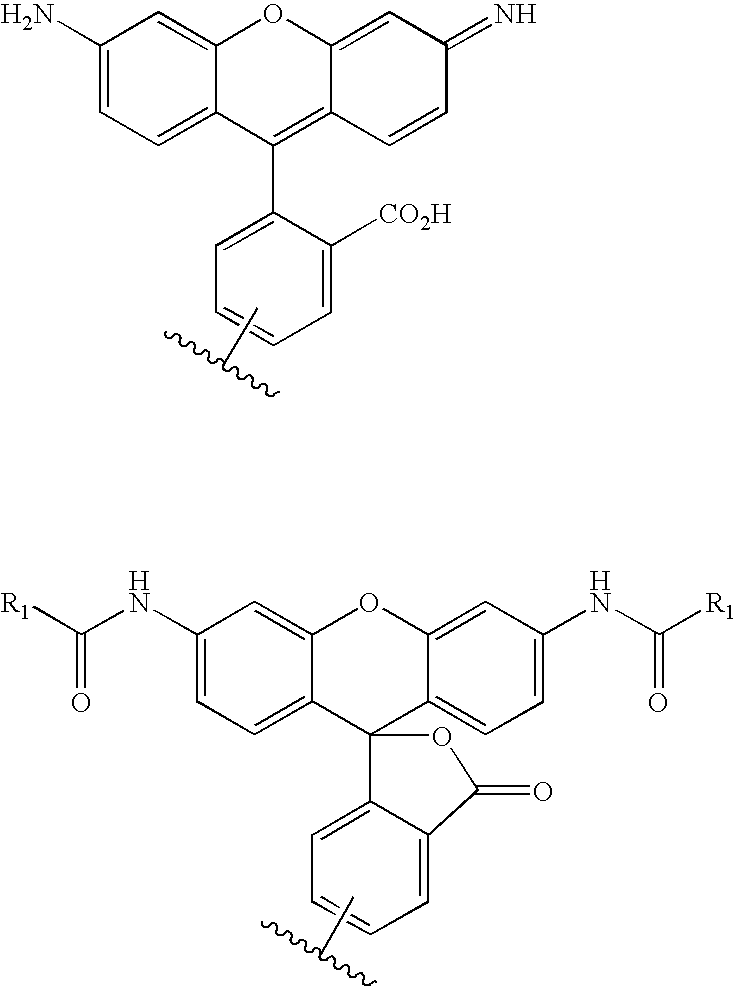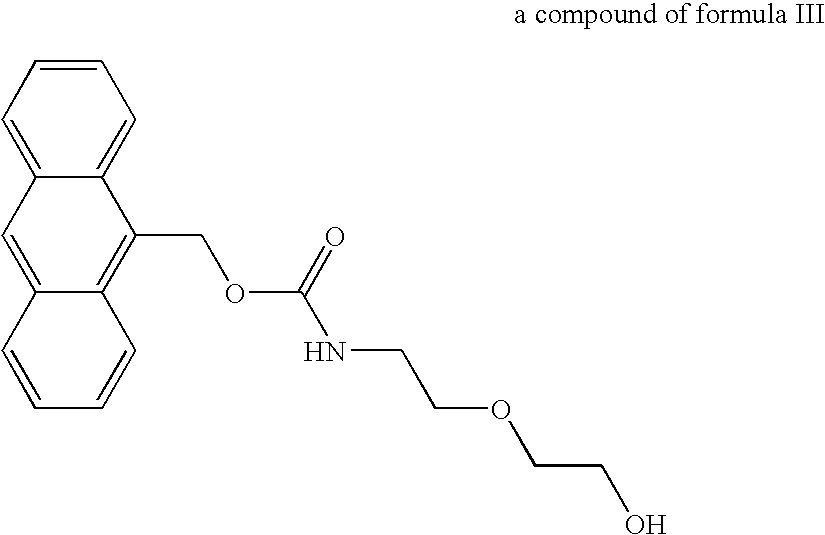Substrates for covalent tethering to proteins
a covalent tethering and protein technology, applied in the field of mutant proteins, can solve the problems of limited sfv expression in the reducing environment, limited fluorescence of intrinsically labeled proteins such as gfp, and limited protein structure properties, so as to achieve efficient loading and washing
- Summary
- Abstract
- Description
- Claims
- Application Information
AI Technical Summary
Benefits of technology
Problems solved by technology
Method used
Image
Examples
example i
General Methodologies
[0256] Unless defined otherwise, all technical and scientific terms used herein have the same meaning as commonly understood by one of ordinary skill in the field of molecular biology and cellular signaling and modeling. Generally, the nomenclature used herein and the laboratory procedures in spectroscopy, drug discovery, cell culture, molecular genetics, plastic manufacture, polymer chemistry, diagnostics, amino acid and nucleic acid chemistry, and alkane chemistry described below are those well known and commonly employed in the art. Standard techniques are typically used for preparation of plastics, signal detection, recombinant nucleic acid methods, polynucleotide synthesis, and microbial culture and transformation (e.g., electroporation, lipofection).
[0257] The techniques and procedures are generally performed according to conventional methods in the art and various general references (see generally, Sambrook et. al. Molecular Cloning: A laboratory manual...
example ii
A. Wild-Type and Mutant DhaA Proteins and Fusions Thereof
[0275] The haloalkane dehalogenase gene from Rhodococcus rhodochrous, dhaA, encodes a monomeric 33 kDa enzyme that catalyzes the irreversible hydrolysis of a variety of haloalkanes (Kulakova et al. 1997), e.g., cleaves carbon-halogen bonds in aliphatic and aromatic halogenated compounds, e.g., HaloC3-HaloC10. A substantial amount of mechanistic and structural information is available on the haloalkane dehalogenases. The DhaA enzyme contains 293 amino acids and is a member of a superfamily of proteins containing an α / β hydrolase fold. The overall structures of the haloalkane dehalogenases from Rhodococcus, Xanthobacter and Sphingomonas are similar and each contains a triad of catalytic residues that is involved in the cleavage of halide-carbon bonds. In the case of DhaA, these residues are Asp 106, E130, and His272 (Newman et al., 1999; FIG. 2). FIGS. 1A-B show the overall catalytic mechanism for...
example iii
Tethering of Luciferase to a Solid Support via a Mutant DhaA and a Substrate of the Invention
Materials and Methods
[0301] phRLuc-connector-DhaA.WT-Flag and phRLuc-connector-DhaA.H272F-Flag fusion cassettes were constructed by cloning the phRLuc coding region into the NheI / SalI sites of the pCIneo vector which contains a myristic acid attachment peptide coding sequence (MAS). Two primers (5′-GCTTCACTTGTCGTCATCGTCCTTGTAGTCA-3′; SEQ ID NO:11) and (5′-GCTTCACTTGTCGTCATCGTCCTTGTAGTCA-3′; SEQ ID NO:12) were designed to add NheI and SalI sites to the 5′ and 3′ coding regions, respectively, of phRLuc and to amplify a 900 bp fragment from a phRLuc template (pGL3 vector, Promega). Then, a myristic acid attachment peptide coding sequence was excised with NheI and SalI restriction enzymes and the amplified fragment containing phRLuc was inserted into the NheI / SalI restriction sites of pCIneo.DhaA.(WT or H272F)-Flag vector. The sequence of each construct was confirmed by DNA sequencing. Promeg...
PUM
| Property | Measurement | Unit |
|---|---|---|
| temperatures | aaaaa | aaaaa |
| length | aaaaa | aaaaa |
| w/w | aaaaa | aaaaa |
Abstract
Description
Claims
Application Information
 Login to View More
Login to View More - R&D
- Intellectual Property
- Life Sciences
- Materials
- Tech Scout
- Unparalleled Data Quality
- Higher Quality Content
- 60% Fewer Hallucinations
Browse by: Latest US Patents, China's latest patents, Technical Efficacy Thesaurus, Application Domain, Technology Topic, Popular Technical Reports.
© 2025 PatSnap. All rights reserved.Legal|Privacy policy|Modern Slavery Act Transparency Statement|Sitemap|About US| Contact US: help@patsnap.com



